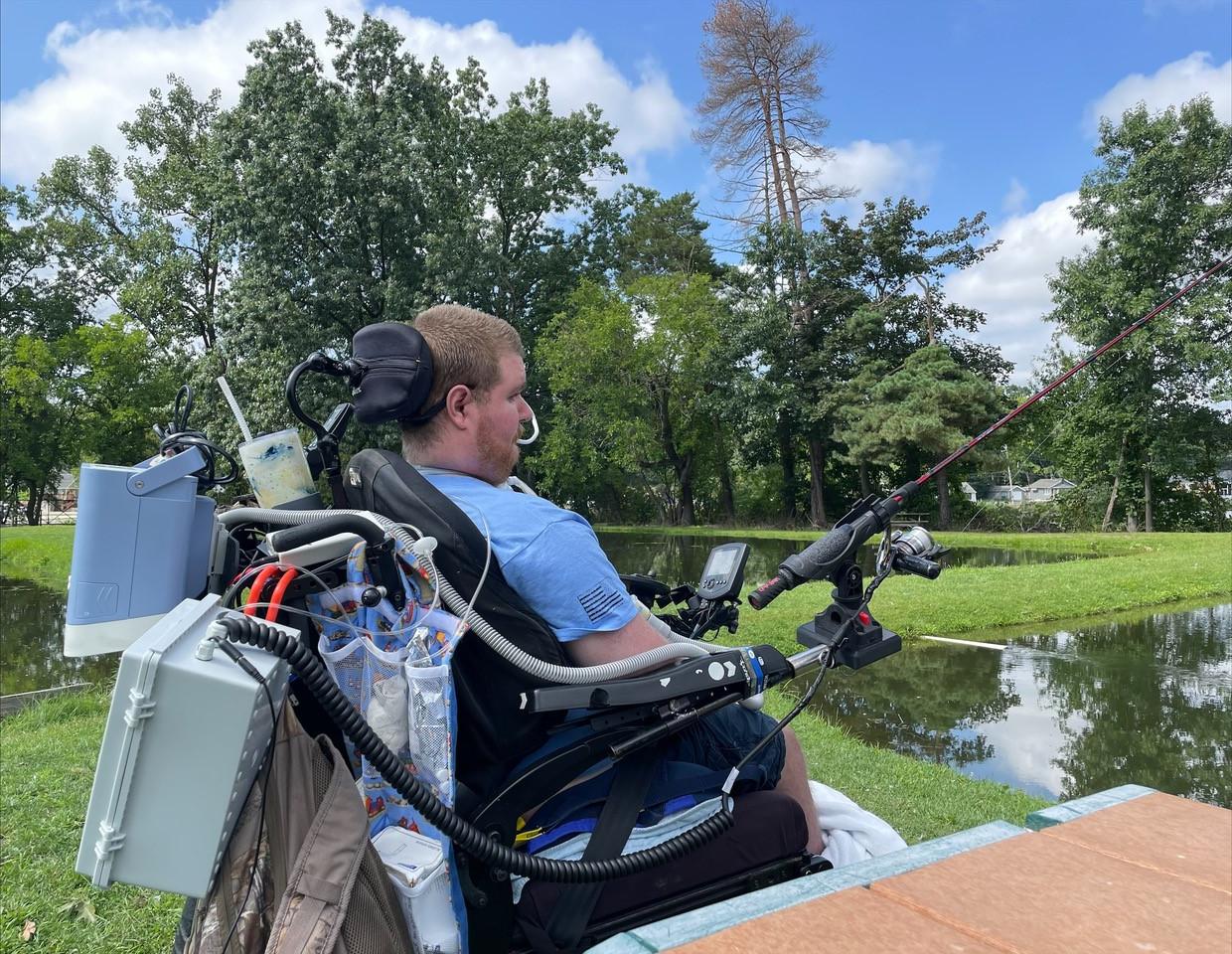The Medical Device Design team, a group of University of Akron (UA) students dedicated to solving the medical needs of the Summit community, has successfully created a new assisted technology device to enable a local resident to "reel" in the joy of fishing.
Despite his deep love for fishing, William (Willie) Tresz, of Barberton, Ohio had been unable to pursue this passion due to his diagnosis of Muscular Dystrophy, that causes progressive weakness and breakdown of muscles over time. The disorder prevented him from fishing due to hand control.
Through a collaborative effort involving the Medical Device Design Team, Summit Developmental Disabilities (Summit DD), TechVerse and Inclusioneers, the group achieved the remarkable feat of helping Tresz, achieve his long-held dream of fishing once more by creating an adaptive fishing pole.

Lena Eljaouhari, a junior biomedical engineering major from Brunswick, Ohio, shared her enthusiasm for the project., “As a biomedical engineering student, I already have an interest in creating engineering solutions for medical problems. We’re able to look into the design process of things that will make people's lives better. It's such a cool experience to work with Summit DD and be able to work out something from start to finish and see what it evolves into by seeing the actual prototype and then to see our customer using it.”
This adaptive fishing pole project was initiated in the fall of 2022, which involved introductory meetings, measurements and initial planning. The design options were solidified as the spring 2023 semester began and ideas were presented to Tresz. The decision was made to proceed with a sip-and-puff switch, a battery powered device that would enable the user to control a device by using their mouth to “sip” (inhale) or “puff” (exhale) on a straw, tube or wand. Tresz’ device was modified as a “puff” switch, a puff of air through the straw, which provides him with the control to stop or start reeling in the fishing line independently. This was the simplest and most effective way to give him the ability to fish.
Haylee DeSonne, community supportspecialist at Summit DD, explained, “The problem is accessibility: Willie doesn’t have access to fishing. The adaptive pole needed customization and Willie told us the scope of the project. He made the decisions to the design path (eye gaze versus puff switch) and determined the best ways he could access fishing (puff switch).”
The team consisted of five UA students who collaborated closely with mentors from Inclusioneers. These mentors, focused on finding inclusive engineered solutions to help the disenfranchised enjoy the same facilities, events, and activities, that are commonly taken for granted by the mainstream population, not only offered expertise in electrical engineering but also provided valuable professional insights that greatly contributed to the team's successful prototype development. The students primarily focused on the mechanical aspects of the project, ensuring that the interface effectively simulated the typical actions involved in fishing. To achieve this, they mounted the fishing holder on a stand that was connected to the wheelchair's arm, thereby ensuring that everyone had a substantial and meaningful role to play in the project.
“It’s rewarding to witness the results of the efforts of numerous individuals. The products are subtle, the engineering is really hidden and that’s how we like it. We want it to be invisible, to feel and look as natural as we can,” said Mike Furtha, president of Inclusioneers, “To me that’s the beauty of what we try to accomplish. That it meets their expectations and it’s a great reward.”
Like most long-term projects, roadblocks did arise whether that be delays in the design process, engineering techniques not working or scheduling issues. However, the design team faced them together and, in the end, ended up with a meaningful end-result.
“Seeing Willie use the design we made was more fulfilling than the issues we had this semester, "stated Eljaouhari. “Just seeing our design works and used by someone who has these problems that we wouldn’t even think about. So just being able to solve one of those for him was just a good feeling.”
Media contact: Cristine Boyd, 330-972-6476, cboyd@993874.com
